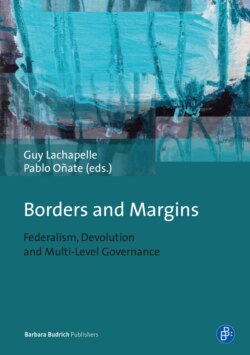Читать книгу Borders and Margins - Группа авторов - Страница 20
На сайте Литреса книга снята с продажи.
MLG versus centralised unitarism (the Westminster Model)
ОглавлениеThe centralised unitary system model (or Westminster Model) refers to parliamentary unitary systems that are centred in political power terms on the national political executive or cabinet. This is the focus of a study by Bache and Flinders on Multilevel Governance and the British State (2004) with which we largely concur. They accept the point of view of most political analysts of the UK that that political system prior to 1998 can be described as a prototype of the centralised unitary system in the pattern of intergovernmental relations that operated between the national government, based in the Westminster Parliament in London, and the country’s various political and bureaucratic decisionmakers representing its territorial regions in England, Scotland, Wales and Northern Ireland during most of the nineteenth and twentieth centuries But their rather different argument, is that MLG works better as an analytical construct when applied to post-devolution UK intergovernmental relations since 1998. They maintain that the UK since that time has been transformed from a centralised unitary state of the “Westminster model” prototype into a decentralised unitary state in its intergovernmental relations involving Scotland, Wales and Northern Ireland (but not England) (Bache and Flinders 2004). Thus, Charlie Jeffery and Daniel Wincott refer to it after 1998 as a “lopsided state,” and Hogwood et al. (2000) describe it as “asymmetrical devolution.” Others described it as a “quasi-federal” system. There will be more discussion of this issue in later sections of the paper.
